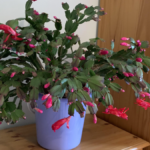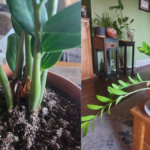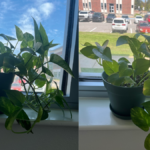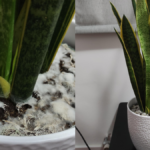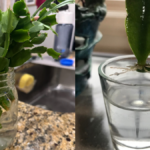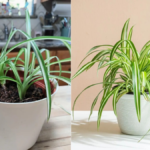How to take care of Hoya plant is simple if you understand its basic needs like watering, sunlight, soil, humidity and a proper environment. Hoya plant grows best in bright indirect light, needs well-draining soil, and does not like too much water. If you take care of these things properly, this plant will give shiny green leaves and beautiful star-shaped flowers.
I have been growing Hoya plants for more than five years in my home garden. During this time, I have learned from experience—sometimes by doing mistakes like overwatering or keeping the plant in low light. In this guide, I am sharing everything that has personally worked for me. This information is based on my real experience and trusted knowledge, not copied blindly from the internet.
IN THIS ARTICLE
About Hoya Plant
Hoya is also called the Wax Plant because of its thick, shiny leaves and wax-like flowers. It is a slow-growing indoor vine plant that can be grown in hanging pots or on a support stick.
| Feature | Details |
|---|---|
| Common Name | Hoya / Wax Plant |
| Plant Type | Indoor vining houseplant |
| Origin | Asia and Australia tropical areas |
| Lifespan | Long-living with proper care |
| Flower Type | Star-shaped, sweet fragrance |
| Light Requirement | Bright but indirect light |
Quick Tips – How to take care of Hoya plant
- Light: Bright indirect sunlight
- Watering: Water only when top soil feels dry
- Soil: Use well-draining and airy soil mix
- Humidity and Temperature: Likes warm and humid environment
- Fertilizer: Feed once a month during growing season
- Propagate: Easy through stem cuttings
- Common Problems and Solutions: Yellow leaves, root rot, no flowers, wrinkled leaves
Watering the Hoya Plant
Watering is the most important part of Hoya care. In the beginning, I made the mistake of overwatering which caused yellow leaves and soft stems. Hoya stores water in its leaves, so it can survive without water for a few days.
My Watering Rule:
- Touch the top 1–2 inches of soil. If it feels dry, only then water the plant.
- In summer, I water once a week.
- In winter and rainy season, I water every 12–15 days.
- Never let water sit in the pot tray because standing water can cause root rot.
This simple routine keeps my Hoya healthy and prevents fungal infection.
Best Soil for Hoya Plant
Hoya plant needs light and well-draining soil. Normal garden soil becomes heavy and holds water, which is not good for this plant.
My Soil Mix for Hoya:
- 40% cocopeat or light garden soil
- 30% perlite or sand for drainage
- 20% compost or vermicompost
- 10% bark pieces or coco chips (optional but good)
This soil keeps roots healthy and allows air to flow, which prevents root rot and fungus.
Sunlight Requirements
Hoya plant needs sunlight but not direct hot sun. Direct afternoon sunlight can burn the leaves, while very low light will stop flowering.
From my experience:
- I keep my Hoya near an east-facing window where it gets morning sunlight and bright filtered light during the day.
- If the light is too strong, I place a thin curtain to filter the sunlight.
- If the plant does not receive enough light, the leaves become pale and it will not bloom.
So, bright indirect sunlight is the best for Hoya.
Humidity and Temperature
Hoya plant naturally grows in moist and warm areas, so it likes humidity and comfortable temperature at home.
- Ideal temperature: 18°C to 28°C
- Ideal humidity: Above 50 percent
My simple methods:
- In summer, I lightly mist the leaves two to three times a week.
- I sometimes place a bowl of water near the plant so moisture increases naturally.
- In winter, I avoid misting too much to prevent fungus.
Fertilizing the Hoya Plant
Hoya does not require heavy fertilizers. Too much fertilizer can damage the roots.
My fertilizer routine:
- I use a liquid organic houseplant fertilizer once a month during the growing season (February to September).
- Sometimes I use homemade compost water or banana peel water.
- I do not fertilize during winter or just after repotting.
Propagate Hoya Plant (Step-by-Step)
Hoya propagation is easy and successful if done properly.
Steps I follow:
- Select a healthy stem with at least two leaves and one node.
- Cut the stem below the node using clean scissors.
- Remove the bottom leaves and keep the top ones.
- Place the cutting in water or moist well-draining soil.
- Keep it in bright indirect light.
Roots start growing in 2 to 3 weeks. Once roots become 2 to 3 cm long, I transfer the cutting into a small pot with well-draining soil.
Common Problems and Solutions
| Problem | Reason | Solution |
|---|---|---|
| Yellow leaves | Overwatering | Reduce water, improve soil drainage |
| No flowers | Low light or no nutrients | Keep in bright light, use mild fertilizer |
| Wrinkled leaves | Less water or dry air | Water properly and increase humidity |
| Soft black stems | Root rot due to extra water | Remove damaged part, repot in fresh dry soil |
FAQs About Hoya Plants
1. How do I get my Hoya plant to bloom?
Provide bright, indirect light and phosphorus-rich fertilizer. Also, avoid cutting off flower spurs, as Hoyas bloom from the same spot every year.
2. Are Hoyas toxic to pets?
No.Hoyas are non-toxic to cats and dogs, making them pet-friendly houseplants
3. Can Hoyas grow in low light?
Yes, but they grow slower and may not flower. For best results, keep them in bright, indirect light.
4. How often should I water my Hoya?
Water once a week in summer and every 2-3 weeks in winter. Always let the soil dry slightly between waterings.
5. Do Hoyas like being root-bound?
Yes.Keeping them slightly root-bound can encourage blooming. Repot only when necessary (every 2-3 years).
Conclusion
In my experience, Hoya plant care is not difficult. You only need to understand its natural needs – bright indirect sunlight, proper watering, airy soil, and some humidity. If you follow these simple steps patiently, your Hoya plant will grow well and may also bloom with beautiful flowers.
This care guide is based on my personal hands-on experience and tested methods. I hope it helps you grow a healthy Hoya plant at home.
Read More Post

